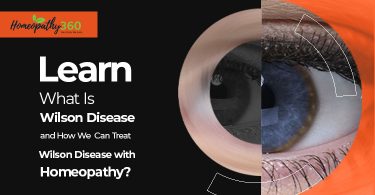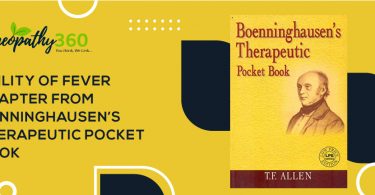BACKGROUND: The main aim of this article is to know the how the new concept of pathological prescriptions emerged in the field of Homoeopathy and how it paved a way for an era of scientific research in the field of Homoeopathy till date.
INTRODUCTION:
“Homoeopathy is the grave of science”; for science as such has no existence here – it dies and is buried.
Dr. Richard Hughes who practiced in the 19th century brought a new separate variant of Homoeopathic practice because of his philosophical approach towards the system. He was a strong supporter as well as a detractor of Hahnemann we can say he followed him as well as did not follow him. He made a blend of scientific developments during his time in his practice making him more individualistic in nature.
Let us know first about Richard Hughes:
He was Born: August 20, 1836 in London, England, his major work was especial a book written by him ‘Manual of Pharmacodynamics’ & ‘Manual of Therapeutics’. Which created a new revolution in the Homoeopathic system of medicine He further was also the editor of British Journal of Homoeopathy. One of the major contributions by him was helping Dr. Dudgeon in translating Hahnemann’s ‘Materia Medica Pura’ into English.
Why did he give importance to pathology?
He was not happy with the medicine whose potencies were above 6C he removed all the proving’s obtained during proving with these potencies as he felt that we need to find out the impact of our dynamic medicines at the organic level and see how the pathology which has happened already can be resolved or treated.
What is the role of Hughes in Homoeopathy & what made him different from others?
The major difference is he
was completely behind the science & his aim was to explain Homoeopathy
scientifically. He was also unhappy about the potency but he gave top priority
to similia principle. Hughes believed that, if you are serious about the similia idea you must
take pathology into account as its one
of the integral parts of case taking & direct you to remedy. He said that medicines should be chosen not just on
subjective symptoms they produced but on the basis of their known pathological
effects on human beings & even on animals. He was not so happy with the
drug proving as well and suggested that it was not enough to look simply at
lists of symptoms recorded in the proving’s.
He also claimed that Hahnemann’s laying down the rule that the 30th
potency should be used for all purposes had fossilized homoeopathy most
undesirably.
About Drug proving his views:
He said that the way proving’s of ‘The Chronic Diseases’ was done, could not have been carried out in the same way as those of ‘The Materia Medica Pura’ & so could not be relied on as accurate descriptions of the effects of the new medicines. So, he re-edited homoeopathic laws “It took considerable courage for a doctor to declare himself a Homoeopath in Hughes’ day somehow he was able to complete his book ‘The Principles & Practice of
Homoeopathy’, he made a remarkable change in homoeopathy”
About similarities of Drugs:
Richard huges is of the opinion that when considering the similarity between the drug and disease action,
there should be similarity between generic specific and
individual action of both drug and disease.
Specific similarity is
nothing but the Specific morbid state originates as the gradual result of the interaction between the organism and its environment. It has various
components such as Seat of action, Kind of action, Nature of the etiology & modifying cause, Character of pain & other sensations, Concomitants, if these five points are found in a drug, then it’s known as pathological similimum.
Individual similarity: Physical constitution of patient is important in homoeopathy; these adaptations is reached mostly by clinical experience but sometimes the physiological effect of drug will lead to them
Conclusion:
Dr. Hughes explained Homoeopathy with the advance science of his time and was able to defend the system as well as get some new changes in the methodology of practicing as well. He practiced Homoeopathy in his own way keeping in mind the basics given by Dr Hahnemann as well.
Reference:
- Sarkar B.K. Hahnemann’s Organon of Medicine. 6th edn. Kolkata: M. Bhattacharya & Co. Private Ltd; 1980. 89-90, 298 p.
- Hahnemann S. Organon of Medicine. 6th edn. New Delhi, India: B.jain Publishers; reprint 2008. 56 p.
- Close S. The Genius of Homoeopathy. New Delhi, India: Indian Books & Periodicals Publishers; reprint 2010. 2, 76-86, 153-4, 183-91 p.
- Hughes R. The Principle and Practice of Homoeopathy. (8th ed). New Delhi: B Jain Publishers Pvt Ltd; 2007. p. 10-32.
About Author:
Dr Skandhan. S. Kumar, BHMS MD Organon of Medicine (Gold Medalist), Assistant professor department of organon of medicine and philosophy, Father Muller Homoeopathic Medical College.
Dr Shreya N Padiyar, BHMS MD Organon of Medicine





